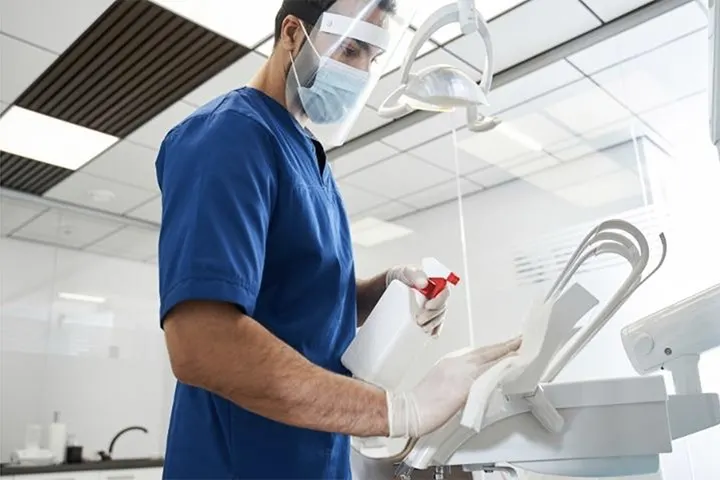How To Properly Sanitize Medical Equipment Between Patients

Sanitizing medical equipment is a hospital’s first line of defense against infection. Here, we discuss proper techniques to perform this essential function.
In 1847, Dr. Ignaz Semmelweis discovered the power of handwashing. This simple practice reduced the spread of disease by almost miraculous numbers. Since then, the medical field has made great strides in keeping patient treatment areas sanitary. This includes determining how to properly sanitize medical equipment between patients. Doing this can help reduce the prevalence of in-hospital infections and enhance patient safety.
Cleaning, Disinfecting, and Sanitizing
Sanitizing a surface or reducing the number of germs and bacteria on them to safe levels has two parts: cleaning and disinfecting. It is important to note the difference between the two to sanitize medical equipment for patients properly. Cleaning involves removing dirt, dust, grime, or other debris from a surface. Disinfecting involves killing germs and bacteria on a surface. Dirt and grime create a film across a surface that both breeds and protects germs and bacteria. Without cleaning a surface first, disinfecting a surface will be significantly less effective. On the other hand, removing dirt from a surface doesn’t necessarily mean a surface is sterile. Both processes must occur for equipment to be safe to use.
Cleaning Surfaces
Cleaning the surfaces of medical equipment is the simplest part of the sanitization process. Liquid soaps or detergents are effective for this purpose. In some instances, facilities can clean a surface with only water since the goal is only to remove the surface grime. However, because soap also has disinfecting elements in it, using soap can help make later sanitization steps more effective.
Disinfecting Surfaces
Heat
Exposing germs to temperatures at or higher than 140 degrees Fahrenheit or 70 degrees Celsius kills them. As such, one common way of disinfecting medical equipment involves putting pieces of equipment into extremely hot environments. One way of accomplishing this is using a washer-disinfector or a commercial washer with a sanitize function. Alternatively, one can boil machine pieces in water.
Chemicals
Not all materials can withstand high temperatures or fit in a washer. In these cases, professionals can use chemical disinfectants. These substances, such as bleach, hydrogen peroxide, ozone, or ethylene oxide, kill the pathogens on a surface completely. Doctors and nurses submerge or wipe down the surface of materials in the disinfectant, then allow it to dry. Surfaces must have time to dry for the disinfectant to kill the germs completely. Proper equipment sanitation makes all the difference in the world in a hospital setting. And if you are utilizing our rental medical equipment, we can provide more specific guidance on proper sanitation for individual equipment types.
